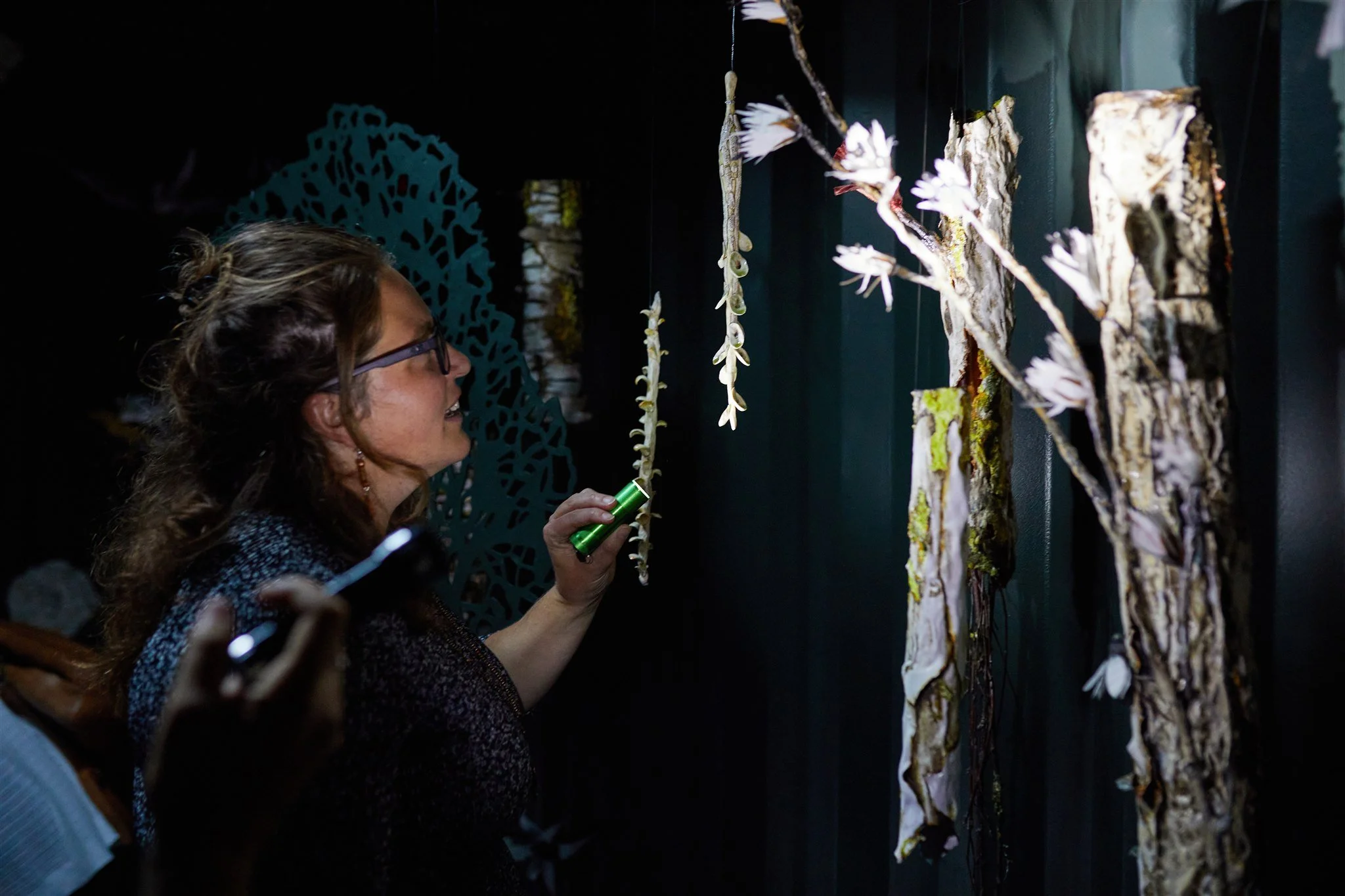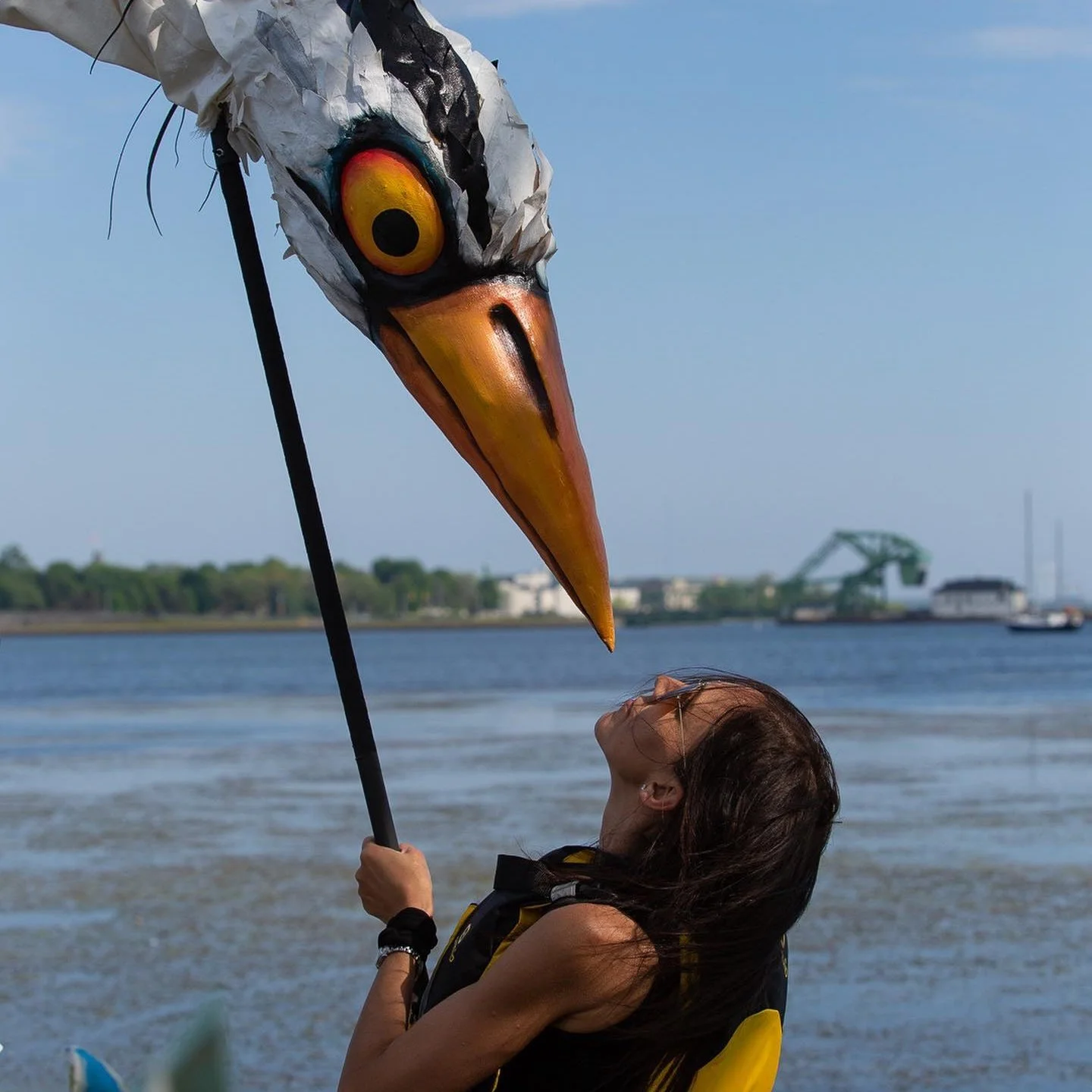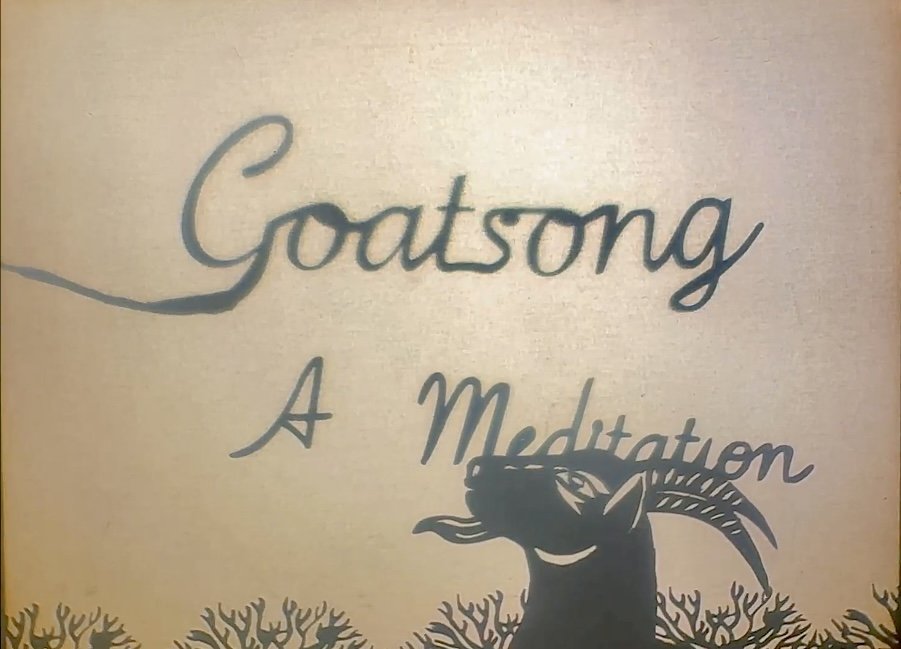Photo by Jackie Hall Photography
Midway upon the journey of our life / I found myself within a forest dark / For the straightforward pathway had been lost.
— Dante Alighieri, Inferno
Walk in a forest. Push through the brambles. Listen to the distant call of birds. Observe the insects and fungi making homes in fallen branches. Smell the rawness of the dirt. Arrive at a clearing — a temporary break. Rest. Observe. Feel the sunlight. Then press on, passing from clearing to clearing.
From September 19 to November 9, 2025, The Clearing, an installation I made with Marney McDiarmid, is on the grounds of the Agnes Etherington Art Gallery’s temporary site (207 Stuart Street, Kingston). The installation is housed inside a shipping container bearing a mural by Lee Stewart. When visitors enter the container—no more than four people at a time—they are greeted by a poem by Sadiqa de Meijer, while a soundscape by Matt Rogalsky fills the space. Sunny Kerr is the Coordinating Curator for the project.
Photo by Donovan Perra.
This is my fourth forest installation inspired by the idea of finding yourself in a clearing in the forest—and my second immersive one. Clearly, I’m obsessed. I can’t stop thinking about woodlands, both as metaphor and as the literal woodlands. Why woodlands? So many reasons, which I’ll get into in a minute (for anyone who cares to read further). One thing I love about being in the woods is how that environment takes me both into myself and out of myself. Sometimes, examining the life clinging to the underside of a piece of bark strips away the version of me that worries about other people’s opinions, the endless to-do list, the guilt of past mistakes. In the woods, I’m simply a living organism among other living organisms. I just exist—and if I didn’t, the woods would go on existing anyway. Oddly, there’s comfort in knowing that although the woods holds meaning for me, I hold none for it.
If you visit the installation, you’ll notice shredded paper scattered across the floor — and you’re invited to shred your own documents and add them to the piece. You may also notice that some of my sculptures contain fragments of text: photocopied pages from my old journals, cut into unreadable strips. The paper, of course, speaks to regeneration — the cycle of tree to paper — but for me, it also holds something more intimate: the materiality of memory. Each fragment carries traces of a life, intertwining and meshing with the environment, reminding me that everything is connected, everything in flux.
My relationship to the woods isn’t simple, and I think — or hope — that comes through in my sculptural pieces in The Clearing. When I think of the woods, what comes to mind is not a single image but a series of incidents and emotions.
When I think of woodlands, I don’t just think of the ones I’ve walked through, I think of fictional woodlands, I think of fairytales and folktales: Little Red Riding Hood, the Gunniwolf, Hansel & Gretal, the woods in Akira Kurosawa’s Dreams, the suicide woods of Dante’s Inferno.
Photo by Donovan Perra.
Until the age of nine, my experience of the woods was limited to suburban woodlands near my grandparents’ house in New York state, the ravines of Toronto, and — when I was eight — a small patch of trees in Yorkshire near a rose garden. All of those places felt tidy and safe: light foliage underfoot, space between young trees, and the reassuring presence of nearby houses. But those are not the woods that stay with me — the ones that keep resurfacing in my mind and compel me to shape bark, flowers, insects, and fierce birds. The woods that do that are the ones outside the village of Lansdowne, Ontario, where my family lived from the time I was nine until I was fifteen, in a cold farmhouse on a dirt road surrounded by ninety-two acres of the Canadian Shield, with a slice of field running through the property and acres and acres of dense, gnarly forest where bark peeled in chunks and smelled of rich earth. A forest where brambles scratched my legs until they bled, where sunlight streamed through trees, where I took refuge after the daily routine of being bullied at the village school, where pink honeysuckle glistened, and where rot and growth were constant companions. It was in that forest where I learned to like the stillness of my thoughts and to let them quiet until I could lose myself to the sensory experiences of my surroundings. Without knowing the term or concept, I found a sit spot — which I was very much in need of.
Those woodlands appeared in my night dreams as boys with hearts decaying like old bark, as trees filled with red-eyed wolves, as streams teeming with cephalopods. In daydreams, I thought of the honeysuckle, trillions of trilliums, and the thin ice giving way to rushing water in early spring. Sitting in the clearing in the woods behind the Lansdowne farmhouse, I discovered that beauty and unease can coexist and that decay is not an end by part of a cycle.
My sculptures for The Clearing don't try to recreate the woods but to evoke the sensation of them — the mixture of curiosity and hesitation. What we discard doesn’t vanish, instead it becomes something else.
Other people have kindly documented The Clearing with photographs and writing:











